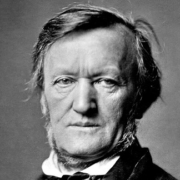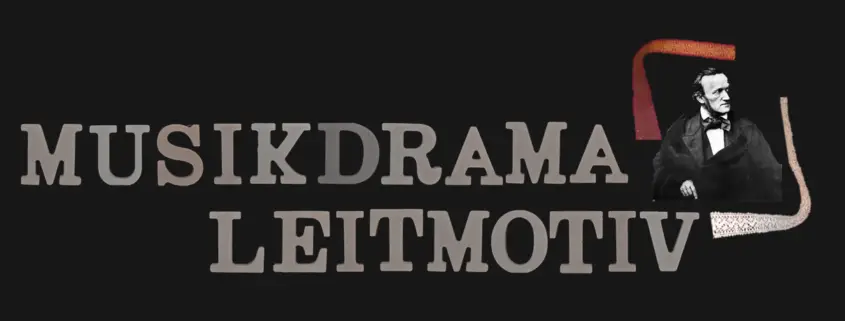Glossary: MUSIKDRAMA, GESAMTKUNSTWERK and LEITMOTIV
This post shows the technical term MUSIKDRAMA, GESAMTKUNSTWERK and LEITMOTIV explained in a few sentences with links to practical examples.
What are Musikdrama, Leitmotiv und Gesamtkunstwerk?

These terms are associated with Richard Wagner.
The music is not divided into scenes and music (“number opera”), but form an inseparable unit, which Richard Wagner called “MUSIC DRAMA”.
Characteristically, the music is closed, with no interruptions (such as tercets, finales, etc.). Recurring motives (LEITMOTIV) create the coherence. A prime example in this sense is Wagner’s work Tristan und Isolde (adapted from Wikipedia), his Ring der Nibelungen or Parsifal, which premiered in 1865 and is no longer called an “opera” but a “plot”.
Wagner understood his operas the longer the more as “GESAMTKUNSTWERK (TOTAL WORK OF ART”, in which the arts of music, acting, painting/stage design and poetry are united. For Wagner it was important that he was not only a composer, but also his own librettist and that he could create his own theater in Bayreuth for his total work of art.
For a detailed account of the leitmotifs of Wagner’s operas, see this link.
Links to the portraits of the operas mentioned:
https://opera-inside.com/parsifal-by-richard-wagner-the-opera-guide-and-synopsis/
https://opera-inside.com/the-ring-of-the-nibelung-by-richard-wagner-the-opera-guide-and-synopsis/
https://opera-inside.com/tristan-und-isolde-by-richard-wagner-the-opera-guide-and-synopsis/
Peter Lutz, opera-inside, the online opera guide




Leave a Reply
Want to join the discussion?Feel free to contribute!